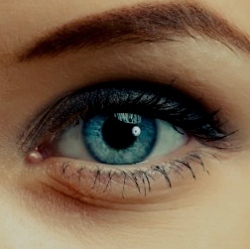
There are now quite a few projects aimed at making "smart contact lenses". Glaucoma is a leading cause of blindness, affecting some 60 million people worldwide. It’s also highly treatable, if caught early. The disease typically occurs when fluid pressure inside the eye rises, choking the optic nerve and causing irreparable damage.
To detect this often sudden shift, a team of doctors at the University of Washington is developing a wireless sensor small enough that it can be attached to a lens and implanted in the eye. It will send data to clinicians in real time through a peripheral device. (Currently, doctors screen at-risk patients every three to four months.) The system may be ready for human trials in as few as five years.
